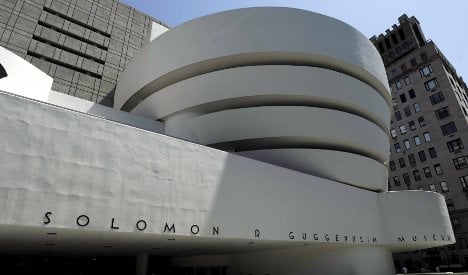The project is basically a travelling think tank on what cities ought to be now and in the future. The BMW Guggenheim Lab – a collaboration between the Solomon R. Guggenheim Foundation and German carmaker BMW – will travel the world drumming up ideas.
The host cities are still a secret. But various media reports have said Berlin has been chosen as the European host and that a parking lot at the northern end of Kastanienallee in the Prenzlauer Berg district is the planned site – which insiders have confirmed to The Local.
The temporary project is set to begin in the German capital in the spring of 2012.
There will be three BMW Guggenheim Labs, each of which will travel to three major cities. The first Lab will start in North America then move to Europe and finally to Asia. The architect will be Japanese firm Atelier Bow-Wow and the graphic designers will be South Korean duo Sulki & Min.
According to the Guggenheim in New York, each Lab will be an “innovative movable structure that will travel from city to city” and bring together artists, architects and scientists for “research, experimentation, and the sharing of ideas about major issues affecting urban life.”
The still somewhat scruffy Kastanienallee is the favoured site in Berlin. But others are supposedly being considered, including Pfefferberg, a nearby cultural venue at a former brewery, a source said.
The catch with Kastanienallee is that the Guggenheim project has run into a local dispute over plans to dramatically revamp of the popular shopping and café boulevard. While officials hope to improve tram and bike traffic, many residents and business are vehemently opposed to narrowing the street’s trademark wide sidewalks.
According to Severin Höhmann, who is running for a seat in the Berlin parliament for the centre-left Social Democratic Party in the city’s September election, redevelopment work on the street was being rushed to fit the timetable of the Guggenheim project, to the detriment and against the wishes of local business owners.
“In my view there is a misunderstanding. It’s about the future of a city … but Berlin is trying to make itself clean and new,” he said. “Even though (local traders) want the Guggenheim, they don’t want it done this way, with this street renewal. They’re changing the time-frame of the project just for the Guggenheim, which isn’t going to be good for the shops and cafés.”
He said the redevelopment should be done over two or three years with close consultation with residents and business owners.
“It should be done more slowly and they should be talking more to people … Now it’s like (controversial rail project) Stuttgart 21. That’s the way of politics today: ‘We decide to do it and we don’t have time to talk to people.’”
Höhmann stressed the BMW Guggenheim Lab would be a great thing for the city but said a rushed overhaul of Kastanienallee without sufficient consultation went against the entire spirit of the project.
“It would be a terrific thing for Berlin. I absolutely want to welcome Guggenheim here. It’s just that it’s not necessary to clean up the neighbourhood to have it. If I have understood it correctly, one of the points of the Guggenheim project is to talk about how cities change, but you can’t do that if it’s not about the city and its people but about the city and politics. It would be a good chance to talk about Kastanienallee.”
One insider, who did not want to be named, said Kastanienallee might have to dropped in favour of another Berlin site.
For now, officials are tight-lipped about the plans. Jens-Holger Kirchner, a Greens member of the Pankow district council who is responsible for public policy, did not respond to request for comments.
However, he told the daily Tagesspiegel earlier this month that having the Lab would be “a great honour and a greater asset” for the city and that the project would enrich the current debate about the future of Kastanienallee.
Guggenheim director of public relations in New York, Betsy Ennis, declined to comment on the Berlin situation and simply told The Local the museum would hold a press conference on Friday, May 6.



 Please whitelist us to continue reading.
Please whitelist us to continue reading.
Member comments